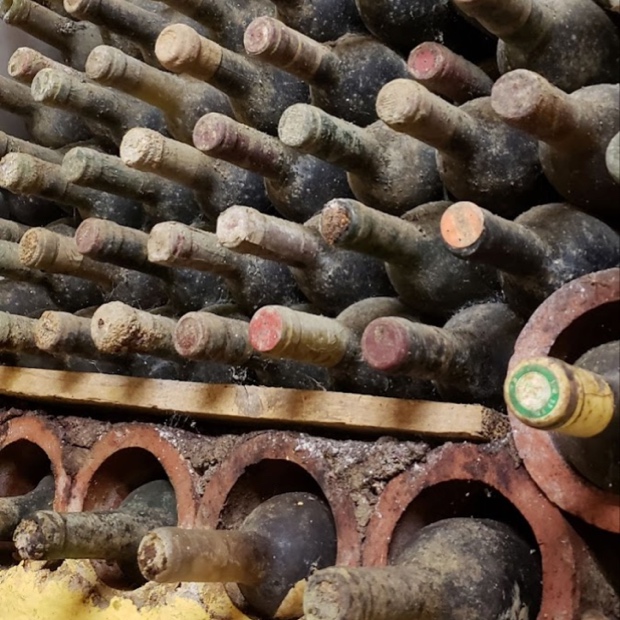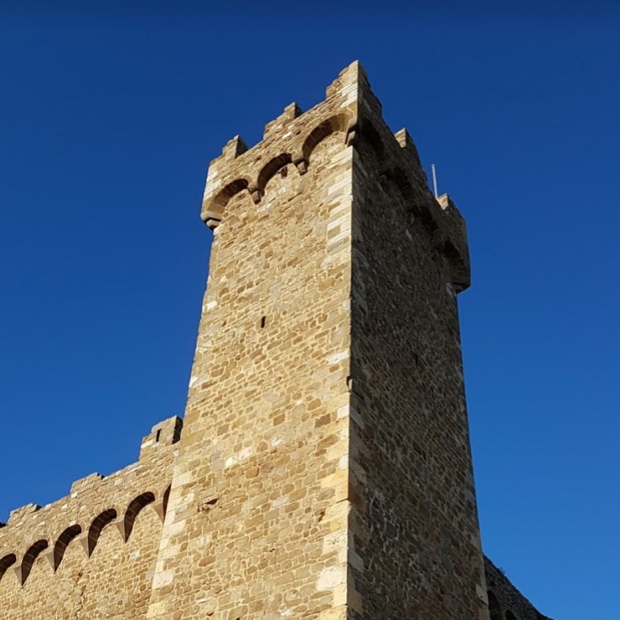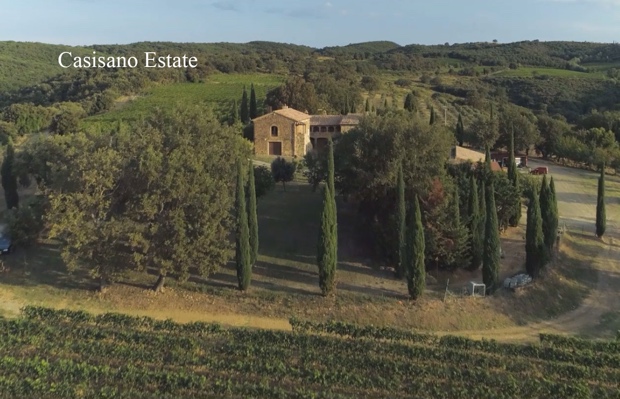Examining the longevity, structure and age-ability of Brunello di Montalcino
When I think of Brunello di Montalcino there are two things that come to mind: Sangiovese and time. Longevità e tempo. Contrasts and comparisons are unnecessary, neither to other grape varieties nor to wine regions that also fashion structured red wines. The sangiovese of Montalcino are like the eponymous medieval hilltop village, an island in a sea of vast varietal openness. They share the impossibility of undergoing the slightest shift in meaning or change, that is, without the assistance of time. They are incomparable, generous and durable but also part of a great community. With the Conzorzio del Vino Brunello di Montalcino at the heart of their matter they find permanence and always seek to endure. As do their makers and protectors.
Related – Ready for a long-term relationship? Brunello di Montalcino Vigna and Riserva
We’ll be searching for answers to Brunello’s aging capacity on Monday, November 30, 2020 when I play host and moderator for the fifth of six online seminars covering all aspects of Montalcino, with the help and support from 25 producers and their sangiovese wines. “Stamina and staying power: Brunello di Montalcino” will explore vintages from 2015 back to 2010 to unlock some secrets behind Brunello’s immutabilità. The webinar will welcome Conte Francesco Marone Cinzano and his Col d’Orcia Brunello di Montalcino 2015; Elisa Sesti with her Brunello di Montalcino 2015; Lucrezia Messina and Franco Pacenti’s Brunello di Montalcino 2015; Riccardo Bogi with Argiano’s Brunello di Montalcino 2014; PierAngelo Tommasi and his Casisano Brunello di Montalcino 2010.
Related – What the winemakers drink: Rosso di Montalcino
Anteprime di Toscana’s culminating 2020 presentation of 2018 Rosso DOC and 2015 Brunello DOCG raised the bar for Montalcino’s venerable sangiovese
Related – Backstage pass to Brunello di Montalcino
Montalcino. Harmony and Unesco Heritage Centre of a surface area totalling 31,200 hectares, 3,660 of which are vineyards planted predominately to sangiovese. An accord of 2,100 to Brunello di Montalcino and 510 for Rosso di Montalcino, delineated and defined in consensus by the late 1990s, set into the Galestro, Arenaria and Calcare soils on hills and over valleys in surround of its medieval village. The merits of change, alteration or expansion have been debated, voted upon and ultimately dismissed every three years and so there has yet to pass any thought of increase or reconfiguration. Neither for Rosso nor for Brunello.
Related – Boomers, Gen Xers and Millennials: 40 years of Brunello di Montalcino DOCG
Col d’Orcia
History, tradition and strutura do not dig any deeper in Montalcino than at Col d’Orcia, an Orcia Valley, (Val d’Orcia) southern slope estate in the Montalcino territory. The lineage dates back to at least 1890, when records show the Franceschi family of Florence purchased the property, then known as Fattoria di Sant’Angelo in Colle. One of two brothers Stefano Franceschi inherited the property, split from Leopoldo in 1958 and then re-named it Col d’Orcia, “{hill above Orcia” after the river that runs through the property. Franceschi later married into the royal family of the future King of Spain Juan Carlos and sold the property to the Piemontese family Cinzano in 1973. At that time only a few hectares were under vine and it was Count Alberto Marone Cinzano that pushed the reach up to 70 hectares by the early 1980s. Since then it has been Count Francesco Marone Cinzano who continued plantings to the current number at 140 hectares, 108 of which are dedicated to Brunello production.
Since August 27, 2010 the whole estate including vineyards, olive groves, other fields and even the gardens are farmed exclusively following organic agricultural practices. The vineyards are located on the southern slope of the Montalcino territory, on hilly lands and extend over 540 hectares, from the Orcia River to the village of Sant’Angelo in Colle, at about 450 metres over sea level. Cold d’Orcia’s soils are loose, skeletal and permeable, poor in clay, rich in limestone and inert materials. Fog, ice and late frosts are of little to no concern and breezes blow frequently for persistent and profitable vine health conditions. Climate is typically Mediterranean, with limited rainfalls concentrated in the months of March, April, November and December. Col d’Orcia the third largest owner of Brunello vineyards in Montalcino.
Col d’Orcia Brunello Di Montalcino DOCG 2015
Classic closed Col d’Orcia youth, nose of earth crusted berries and not nearly the mature notes of what the future surely holds. Though meant to be consumed much earlier than Riserva or Poggio al Vento there’s no escaping the place and the winemaking ways of the house. It is truly appreciated how youth in a Col d’Orcia sangiovese does not mean chocolate or vanilla, nor any overbearing barrel notes. It does regard spice and piqued feelings that bode well for a long future. Drink 2023-2030. Tasted February 2020
Col d’Orcia Brunello Di Montalcino DOCG 2014
A gregarious and sour-edged entry marks the ’14 Col d’Orcia with plenty of spice. Cinnamon and star anise are exotic notes off the top and then things turn tough and closed. This is a tightly wound 2014, clearly one of the ambitious albeit traditional attempts at perpetuating great and storied Brunello glory. Remains to be seen if it can reach the heights of 1979. Drink 2021-2031. Tasted February 2019
Col d’Orcia Brunello Di Montalcino DOCG 2010
Brunello at 10 years is like the Rosso in advance and then not at all. The fruit aromas are all skin, scraped, studded and seasoned. You can feel how special the vintage phenols were and continue to be, now in their twilight of first stage freshness. It may be remembered as a vintage less than eventful but you can also make note of what must have been great bold bitters and demanding skeletal framing that kept pleasure down. Rising now, flesh in pulse and equitable tacit celebration. Heady and big Brunello from a vintage gone long on stuffing. Drink 2020-2030. Last tasted February 2020
So hard to know how Col d’Orcia’s Brunelli are able to glide so stealthily through time without haste and with so much slow moving grace. But here is yet another bit of restrained sangiovese power, wild of fruit heart and subtle in animal behaviour. The high acidity vintage spreads the energetic love with great and intentional fervour, showing as credibly and forcefully as could possibly have hoped or expected. Cold, cloud cover vintage does the yeoman work for sangiovese lifeblood to send it 20 years forward for all to believe. 2000, baby. Drink 2020-2027. Tasted February 2020
Col d’Orcia Brunello Di Montalcino DOCG 1989
A huge Col d’Orcia, perhaps the biggest, broadest and most ferric I’ve ever tasted. That pool may only be 25 but this bites twice and is far from shy. It’s obviously vintage but also feels like a vintage of ambitious winemaking. The oak, oak spice, alcohol, unami and dried fruit are all fully throttled and simply add up to deliver a vibrant massive attack. Red fruit is nowhere to be found, left instead in a void filled by porcini, sanguine carne and herbal potpourri. The acidity eventually brings out more charming moments but this is really an unrelenting sangiovese. Will live 15 more years easy although there wont be the type of fruit still lingering shown by the 1979. Drink 2019-2027. Tasted February 2019
Col d’Orcia Brunello Di Montalcino Riserva DOCG 1969
Tasted from three different bottles, the first showing TCA, the second alive and quiet, the third singing. Bottle variation is not surprising at all, especially in wines of this ilk and age. The family arrived at the estate in 1973 to find some vintages in barrel and this ’69 in concrete. Because the third sample was not just the best but the one with real personality we’ll just concentrate on it. The nose is very floral and full of toffee, toasted chestnut and burnt orange. The palate is lively, hopping really. A mild bitterness marks the finish, still pulsing with acidity though not with tannin. Great look back. Drink 2019-2020. Tasted February 2019
Col d’Orcia Brunello Di Montalcino Riserva DOCG Poggio Al Vento 2012
Not so surprising I suppose that Poggio al Vento 2012 is still reductive, closed and locked tight. There is a massive Poggio (al Vento) of fruit piled high inside the shell from the windy hill above the river. Fine tannins are even more impressive is the fine-styled acidity. When the shell cracks the riches will spill out, across and over. Over everything. Drink 2023-2036. Tasted February 2019
Col d’Orcia Brunello Di Montalcino Riserva DOCG Poggio Al Vento Riserva 2010
Poggio al Vento Riserva 2010 is so very smoky and wood charred so you wonder about the fruit but air brings a fleeting glimpse of that red toned life before the wind swirls to send it back to the smoky embers beneath the roasting bones of the cinghiale. Charm in Poggio al Vento is hard to come by so early and this is far too early. The palate is richer than you think and again with wood so prevalent. There is no doubt that a wait of five more years is needed before beauty can be coaxed out of this formidable Brunello. The vintage, the vineyard and the traditional house style all conspire for this Etruscan structure, meant to impress, influence and last just long enough. Drink 2021-2031. Tasted February 2017
Col d’Orcia Brunello Di Montalcino Riserva DOCG Poggio Al Vento Riserva 1990
Oh my word 1980 carries plenty of residual acidity in an antithetically mild, wholly and utterly unexpected way. Energy, potency, drive and this unrelenting need to express itself. Tight, taut, slinging arrows of tension that make the fruit or what’s left of it almost inconsequential. In actuality there is fruit, namely red currant, sour cherry and pomegranate. Improves with these flavours away from the clay-earthy aromatics and lingers good and plenty. Stays with you, as it has done for 40 years. Drink 2020-2023. Tasted February 2020
Col d’Orcia Brunello Di Montalcino Riserva DOCG Poggio Al Vento Riserva 1979
Quiet, not just at first, but in continuum, a good thing with just a few initial hints of age. There can be immediate concern of this being 40 years-old. It’s hidden talents prevent you from knowing and of those, fineness of acidity is at the top of the heap. I’d say there was some astringency and mean streak tannin in the first ten years, or perhaps maybe more. It seems this Riserva was a beast for so long and only the last ten years have allowed it to deliver such gentility and charm. It’s amazing really and glad this bottle hung in there. It’s very special. In fact it’s still unfolding. Drink 2019-2025. Tasted February 2019
Tommasi Casisano Brunello Di Montalcino DOCG 2015
A lightning red fruit Brunello out of 2015 from Tommasi’s Casisano with tight acids and a lightness that allows for a breath of fresh Brunello air. A thriller this one, not a killer and blessed with ease of amenability. Tannins build with more strength then expected though ultimately speaking the heights are scaled early and no great amount of time is needed to make headway with this wine. Terrific first five years sangiovese, for food expected and wholly unexpected ways. Drink 2021-2025. Tasted February 2020
Tommasi Casisano Brunello Di Montalcino DOCG 2013
The Casisano Estate is found eight kilometres south of the town in Sant’Angelo in Colle, incidentally of population 204, as noted by a 2011 census. At 500m the vineyards benefit from temperature swings and the necessity of prevailing cool winds from the sea to the west. The Brunello developed here (like Ragnaie) turns out classic red clay and stone derived deep cherry liqueur but of a constitution and flavour unlike any other sangiovese on earth. It’s almost brambly and even a bit scorched. It’s rich, proper and righteous. Best of all, the best years still lay ahead. Drink 2019-2024. Tasted March 2018
From Casisano in Sant’Angelo in Colle, to the south of the village. Tomassi’s Montalcino situation is another one of altitude and therefore a great choice of location from which to develop a strong and structured Brunello ideal. This ’12 is not unlike the ’13 but perhaps with a bit more hyperbole, at times of warmth and at others, elegance. It’s not completely sure of its position, but that is both a matter of vintage and still getting to know the lay of this land. The follow-up 2013 will continue to cement the altitude influence and the understanding of these exceptional vineyards. This ’12 is a great building block for the future of what will be one of the more storied cru in Brunello di Montalcino. Drink 2018-2022. Tasted March 2018
Tommasi Casisano Brunello Di Montalcino DOCG 2011
This Brunello organizer is the Tommasi family from Verona and their Montalcino foray. Though not the easist of the Brunello vintages this 2011 from Casisano takes what is given and delivers a classic rendition from traditional motives. There is some dried plum and fig fruit, slightly baked and certainly firm to match the tannic structure of the vintage. This will shrivel into dried goods, mushroom and balsamic territory before too long. Drink now for fresh results and later for a much more old school way. Drink 2017-2020. Tasted March 2017
Tommasi Casisano Brunello Di Montalcino Riserva DOCG Colombaiolo 2013
From Tommasi this is only the third Riserva after the family purchased the estate in 2011, though a wine has been made from Colombaiolo fruit since 1996. The vineyard was planted in 1991 on a hectare and a half on the Sant’Angelo in Colle Casisano estate. The fruit is quite variegated, full and ripe. The acids are supportive, on the high-toned side and the tannins are really fine. A nice balance and a tri-symbiotic relationship exists between the three friends and in the end a structure of fine accord is managed. Drink 2021-2027. Tasted February 2019
Good to go!
godello
Twitter: @mgodello
Instagram: mgodello
















